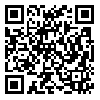
 , Fatemeh Pourfatemi
, Fatemeh Pourfatemi 
 , Kimia Kahrizi *
, Kimia Kahrizi * 
 1, Yaser Riaz-Alhosseini
1, Yaser Riaz-Alhosseini 
 , Marziyeh Mohseni
, Marziyeh Mohseni 
 , Niloufar Bazzaz-Zadegan
, Niloufar Bazzaz-Zadegan 
 , Nooshin Nik-Zaat
, Nooshin Nik-Zaat 
 , Hossein Najm-Abadi
, Hossein Najm-Abadi 

Objective: Hereditary Hearing loss (HHL) affects one in 1000-2000 newborns and more than 50% of these cases, the loss has a genetic basis. About 70% of HHL is non-syndromic with autosomal recessive forms accounting for ~85% of the genetic load. To date, more than 100 locus estimated for this kind of deafness. Different genes have been reported to be involved, but mutations in the connexin 26 gene (Cx26) have been established as the basis of autosomal recessive non-syndromic hearing loss. The aim of this project is to study the prevalence of connexin 26 mutations.
Materials & Methods: In this descriptive study, the prevalence of connexin 26 mutations was evaluated by using amplification refractory mutation system (ARMS)-PCR for detection of 35delG and then analyzed all samples excluding 35delG homozygote by DHPLC and direct sequencing. 38 patients with autosomal recessive non-syndromic hearing loss were selected simply and participated in this research.
Results: 76 chromosomes (38 patient) were screened for GJB2 mutations. Thirty two (42%) carry GJB2 mutations including 35 delG, W24X, R32H, R127H, -3170G>A. Among them, 35 delG has the highest frequency (84%). Polymorphism V153I was found in three chromosomes.
Conclusion: According to these results, other loci and genes may be the major responsible for nonsyndromic deafness in this population.
Received: 7/10/2007 | Accepted: 7/10/2015 | Published: 7/10/2015
| Rights and permissions | |
 |
This work is licensed under a Creative Commons Attribution-NonCommercial 4.0 International License. |
